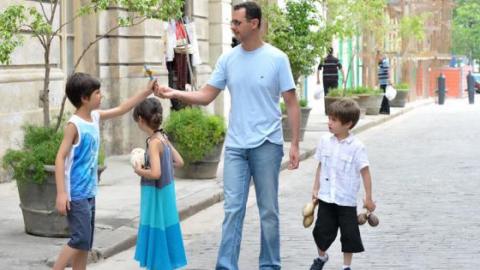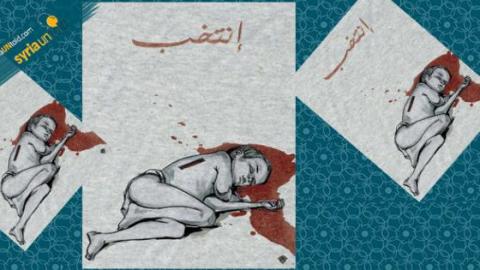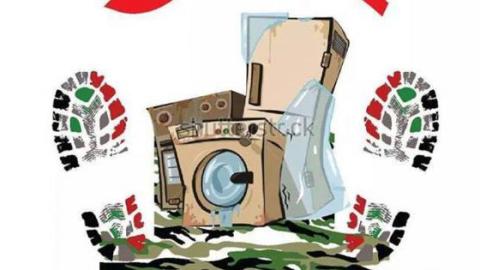As it continues to bomb population centers throughout the country, the Syrian regime has devoted itself to the farce that is the presidential elections. Through this performance, Bashar al-Assad is presented as an uncontested ruler and the only holder of the truth, in a context of a conspiracy against the country.
In the Syrian elections, unlike in those held elsewhere, there are answers without questions. Assad delivers speeches and statements that respond to a parallel reality, one that ignores the suffering on the ground and silences what is truly at stake. How can elections be held while the country is being destroyed? How can the word democracy be pronounced where there is no sovereignty? What about the 200,000 killed and the millions of refugees and displaced?

In this parallel reality that the regime attempts to project, Assad is presented as an unquestionable ruler, but also as an impeccable human being. Both the streets and state media are now filled with images of him as a child attending school, a model father and husband, or a doctor exercising the noblest of professions. He is thus presented in a humanized light, with no resemblance to the brutality he has employed against any form of opposition.
Although the situation is more dramatic than ever, the marketing and PR methods are the same as always. Syrians are used to seeing public spaces filled with photos of the family that has ruled the country for over forty years, and to the pressure on students, professors and civil servants to attend pro-Assad marches and initiatives. What is new, however, is the fact that there is now a huge and decentralized response to the official discourse.

“Sawa” (Arabic for “together”), the name of the campaign launched by the Syrian regime -- and also the name of the latest Russian campaign -- quickly backfired online, as users juxtaposed the campaign slogan against large amounts of content showing the extent of Assad’s repression. Content also includes powerful Syrian-made art that reflects on the dramatic situation the Syrian population faces and the mockery that is the elections.
An imagery of rockets and barrels falling over the population, destroying life, buildings, land and world heritage sites, versus one of a stable country unified by a loving leader. One speaks for itself, while the other is sustained by a big marketing campaign. One is tragically real, the other represents a photoshopped version of a Syria that never existed.
In every election, there are competing images, messages and representations, but the Syrian regime has managed to take this to another level: a parallel universe to mask the eerie face of repression and war.




